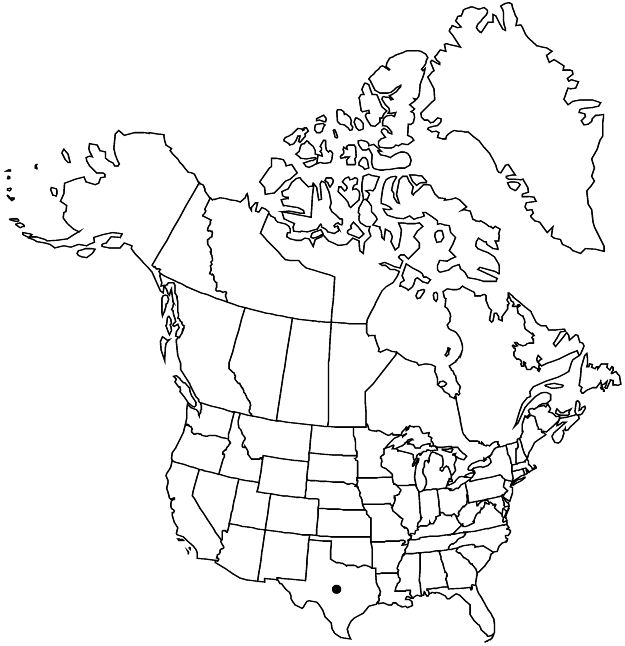Oxalis dichondrifolia
Smithsonian Contr. Knowl. 3(5): 27. 1852. (as dichondraefolia)
Herbs perennial, caulescent, caudex present, rhizomes and stolons absent, bulbs absent, taproot sometimes with tuberlike portions. Aerial stems mostly 1–3 from base, erect, 5–20(–30) cm, becoming woody proximally, finely hirtellous-villous. Leaves cauline; stipules brownish, linear-setiform, margins without flanges, apical auricles absent; petiole (0.5–)1–3 cm; leaflet 1, dull gray-green, suborbiculate to oblong-obovate or ovate, 5–37 mm, not lobed, apex concave or truncate to retuse and apiculate, surfaces strigose-hirsute, oxalate deposits absent. Inflorescences 1-flowered, axillary at distal nodes; peduncles 15–25(–50) cm. Flowers heterostylous; sepal apices without tubercles; petals yellow to orange-yellow, 11–13 mm. Capsules broadly cylindric, 5–8(–10) mm, densely pilose.
Phenology: Flowering Feb–Jun, sporadically year-round.
Habitat: Gravelly hills, clay dunes, limestone slopes, calcareous marl, sand, sandy loam, sandy silt, alluvial soils, brushlands, mesquite thickets, chaparral, roadsides, fields, ditch and river margins.
Elevation: 0–500 m.
Distribution

Tex., Mexico (Coahuila, Nuevo León, San Luis Potosí, Tamaulipas, Veracruz).
Discussion
Oxalis dichondrifolia is fairly widespread in southern Texas.
Selected References
None.